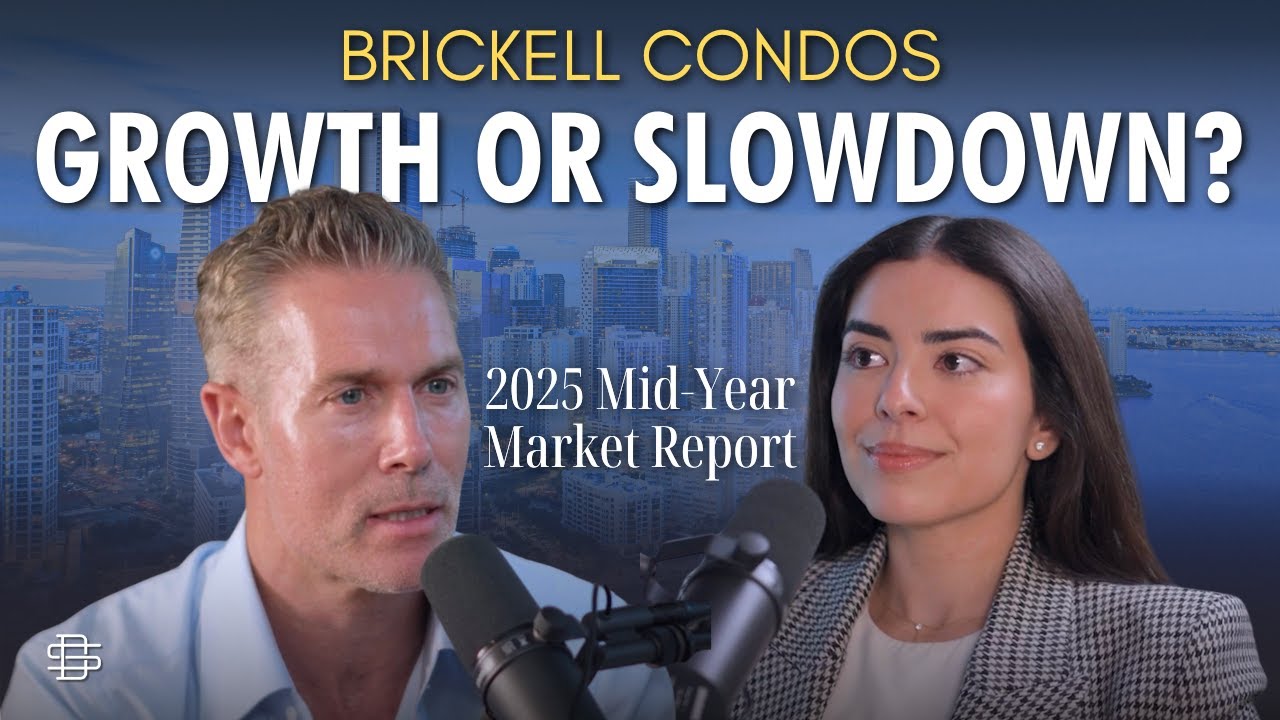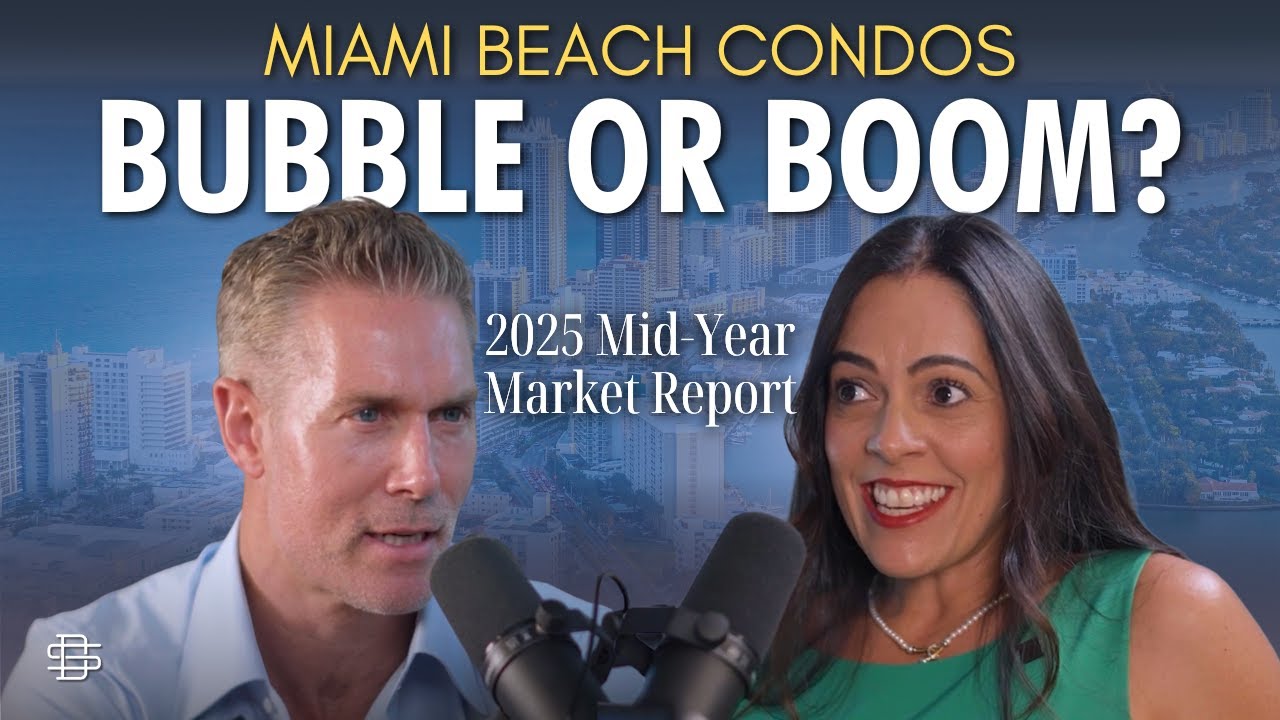
- Best of All
- Best Miami Luxury Condos
- Most popular
- Relocating to Miami
- Private Schools
- Investments
- Gated communities
- Waterfront information
- Luxury homes
- Luxury Condos
- New Construction Condos in South Florida
- Independent Pre-Construction condo reviews for Miami
- Independent Pre-Construction condo reviews for Fort Lauderdale
The Truth About the Sinking Condos in Miami—Should You Be Worried?
For today’s Better Decisions Podcast, we’re sitting down with Katherine Kallergis, residential bureau chief and a senior reporter at The Real Deal to discuss the “sinking’ condos in Miami. She recently published an article titled ““Unexpected”: Dozens of Coastal High-rises in Miami-Dade are Sinking“ the article highlights a concerning UM study that has sparked significant discussion. Katherine breaks down the findings.
The study, conducted by the University of Miami, analyzed satellite imagery to track the rate at which coastal buildings are slowly sinking. Data was collected between 2016 and 2023, covering even post-2014 constructions. The focus areas included Bal Harbour, Surfside, and Sunny Isles—home to many high-end condo developments—which made the findings all the more surprising.
Are Miami Condos Sinking? What the ‘Sinking Condos in Miami’ Study Really Says
A recent study on Miami’s high-rises raised alarms with a dramatic headline, but within the first 30 seconds, the report itself reassures readers—there’s no need for panic. While the study explores the geological factors behind building shifts, it’s not necessarily a cause for immediate concern. Miami is built on limestone with layers of sand interspersed throughout. During construction, vibrations cause slight shifts in these sand particles, leading to a natural process called subsidence. But how normal is this?
The key question isn’t whether subsidence happens—it does—but rather, was anything unexpected? According to industry experts, not really. Architect Kobi Karp and multiple developers have commented that this phenomenon is well understood. In fact, new construction is heavily engineered to account for it. Extensive soil testing is done before building, and foundation piles are driven hundreds of feet into the ground, depending on the height of the structure. Engineers even overcompensate—by about 30%—to ensure safety. So, how significant is the sinking? The study found shifts between 2 to 8 millimeters per year—less than an inch over time. Engineers expected some movement, but the study’s surprise was that it continued for years. While subsidence typically slows over time, researchers are now investigating whether this trend will persist and what that could mean for the future.
For now, experts agree: Miami’s high-rises aren’t sinking in a way that should cause alarm. The question moving forward is how long these subtle shifts will continue.
Ethical Reporting: Navigating the Fine Line
Journalists often have to dive into unfamiliar topics quickly, which means it’s crucial to be cautious when reporting, as your words can have immediate consequences. The dramatic headline in this case caught attention, but the tone of the report aimed to avoid sounding overly alarming. I spoke with the study’s authors, and they emphasized that there’s no reason to panic. Some have begun drawing comparisons to the Champlain Towers collapse, which was caused by a much more dangerous issue. But how do we address these concerns responsibly?
The positive takeaway is that buyers are becoming more informed and cautious, asking insightful questions. At least the buyers I work with are. I also make sure to advise them about both the good and bad developers in the market. Unfortunately, a few bad actors can tarnish the reputation of the entire industry. However, there are many excellent developers who prioritize thorough research and long-term quality.
The Big Stories These Days
One of the major concerns right now is the cost of financing and interest rates. Another significant topic is condo buyouts, which has recently been affected by a ruling that makes buyouts more difficult for developers. There’s a deadline approaching for buildings to meet financial reserve requirements or make necessary adjustments. Once budgets are finalized, owners will assess whether they can afford to maintain their buildings. If not, they may consider selling the land to developers if it proves to be more valuable. However, financing is also becoming more challenging for developers. While we aren’t seeing a noticeable increase or decrease in buyouts, the new regulations are making it harder for some owners, particularly in older buildings where residents on fixed incomes, such as retirees, are struggling to keep up with rising reserve requirements and insurance costs. As a result, developers may find it easier to buy these properties out.
Multifamily properties are struggling, and some are now being converted into condos. We’re currently analyzing whether these conversions are proving successful. However, this shift is worsening the lack of affordable housing. Older condos have traditionally provided a more affordable option, but many are being sold and replaced with new, higher-end developments—pushing affordability further out of reach. As a result, many residents are moving farther away or even leaving the state, while wealthier buyers continue to move in. This growing imbalance is making it increasingly difficult for service workers to find housing near their jobs.

The Changing Landscape of Journalism
The way people consume news has evolved. Readers no longer rely solely on traditional websites—many now get their information through social media. With mass media producing an overwhelming amount of content, my role as a journalist has shifted. I used to write three stories a day, but now I’m covering various, and more in-depth and serious topics on a daily basis. There’s also a growing demand for quick, digestible content. While social media, podcasts, and short-form snippets grab attention, fewer people take the time to read full articles. This creates challenges, as many form opinions based on headlines alone, missing key details.
Commitment to Honest Journalism
In an era of misinformation, our goal remains clear: to provide honest, well-researched reporting that helps you make informed decisions. With rising attention on social media and platforms like The Real Deal, we’re committed to cutting through the noise and highlighting real trends in Miami real estate. We encourage open discussion and welcome anyone who can bring transparency to the market. Whether covering major events like building collapses or shifting market dynamics, our mission is to focus on what truly matters.
Connect with David Siddons
FAQ
These are the most commonly asked Google Real Estate Related questions
1. What are the Current Best New Condos in Miami?
If you want to hear in more details our opinions on the best new Miami new construction condos. Please read this article:Best New Construction Condos 2022-2023.
2. What is the best New Construction Condo in Fort Lauderdale?
In our opinion, the Residences at Pier Sixty-six are certainly the most interesting and unique. Already well underway this 32 Acre project will be home to the first of its kind Marina where owners will be able to anchor up vessels up to a staggering 400 ft! For specifics of this project see our independent review of this project.
3. How can I compare the new luxury construction Condos to the best existing Luxury Condos in Miami?
Our Best Luxury Condos in Miami article will prove to be very useful to those looking to compare the existing to the new. You may also want to watch this video which shows the performance of the best Condos in Miami over the last 15 years!
Please fill in your details and David Siddons will contact you
- Get our Newsletter
- Subscribe
- No Thanks
Get the latest news from Miami Real Estate News
Edit Search
Recomend this to a friend, just enter their email below.
 COMPARE WITH CONDOGEEKS
COMPARE WITH CONDOGEEKS







































